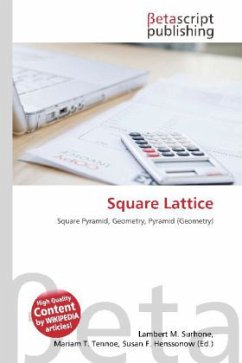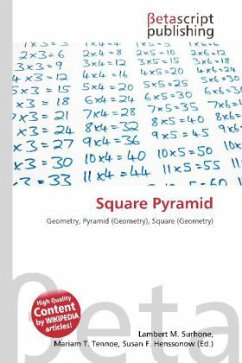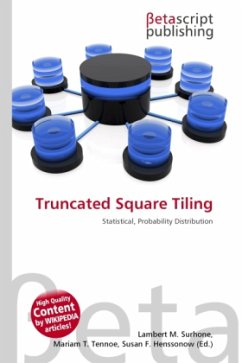
Square Lattice
Versandkostenfrei!
Versandfertig in 6-10 Tagen
19,99 €
inkl. MwSt.

PAYBACK Punkte
10 °P sammeln!
Please note that the content of this book primarily consists of articles available from Wikipedia or other free sources online. In mathematics, the square lattice is one of the five two-dimensional lattice types. It is the two-dimensional version of the integer lattice. Two orientations of an image of the lattice are by far the most common. They can conveniently be referred to as "upright square lattice" and "diagonal square lattice". They differ by an angle of 45°. The square lattice''s symmetry category is wallpaper group p4m. A pattern with this lattice of translational symmetry cannot hav...
Please note that the content of this book primarily consists of articles available from Wikipedia or other free sources online. In mathematics, the square lattice is one of the five two-dimensional lattice types. It is the two-dimensional version of the integer lattice. Two orientations of an image of the lattice are by far the most common. They can conveniently be referred to as "upright square lattice" and "diagonal square lattice". They differ by an angle of 45°. The square lattice''s symmetry category is wallpaper group p4m. A pattern with this lattice of translational symmetry cannot have more, but may have less symmetry than the lattice itself. An upright square lattice can be viewed as a diagonal square lattice with a mesh size that is 2 times as large, with the centers of the squares added. Correspondingly, after adding the centers of the squares of an upright square lattice we have a diagonal square lattice with a mesh size that is 2 times as small as that of the original lattice. A pattern with 4-fold rotational symmetry has a square lattice of 4-fold rotocenters that is a factor 2 finer and diagonally oriented relative to the lattice of translational symmetry.












